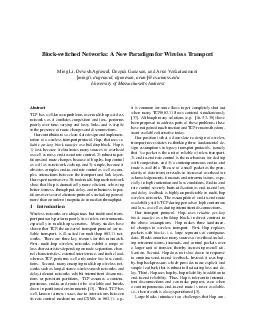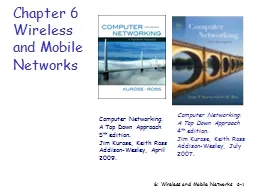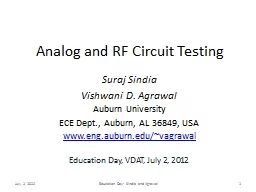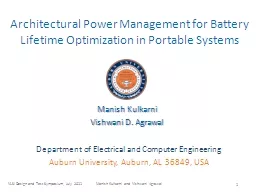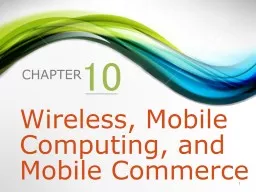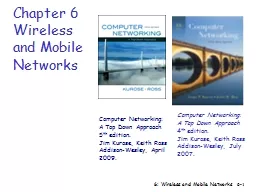PDF-Blockswitched Networks A New Paradigm for Wireless Transport Ming Li Devesh Agrawal Deepak
Author : pasty-toler | Published Date : 2014-12-12
umassedu University of Massachusetts Amherst Abstract TCP has wellknown problems over multihop wireless networks as it con64258ates congestion and loss performs
Presentation Embed Code
Download Presentation
Download Presentation The PPT/PDF document "Blockswitched Networks A New Paradigm fo..." is the property of its rightful owner. Permission is granted to download and print the materials on this website for personal, non-commercial use only, and to display it on your personal computer provided you do not modify the materials and that you retain all copyright notices contained in the materials. By downloading content from our website, you accept the terms of this agreement.
Blockswitched Networks A New Paradigm for Wireless Transport Ming Li Devesh Agrawal Deepak: Transcript
Download Rules Of Document
"Blockswitched Networks A New Paradigm for Wireless Transport Ming Li Devesh Agrawal Deepak"The content belongs to its owner. You may download and print it for personal use, without modification, and keep all copyright notices. By downloading, you agree to these terms.
Related Documents

